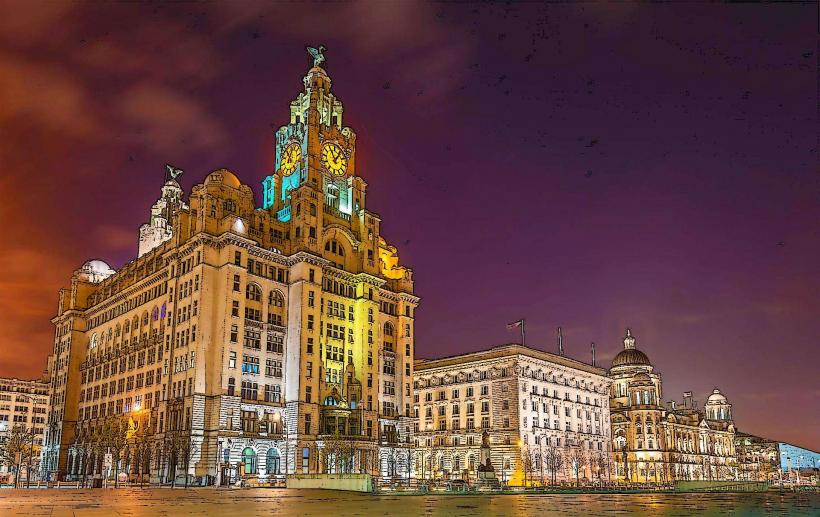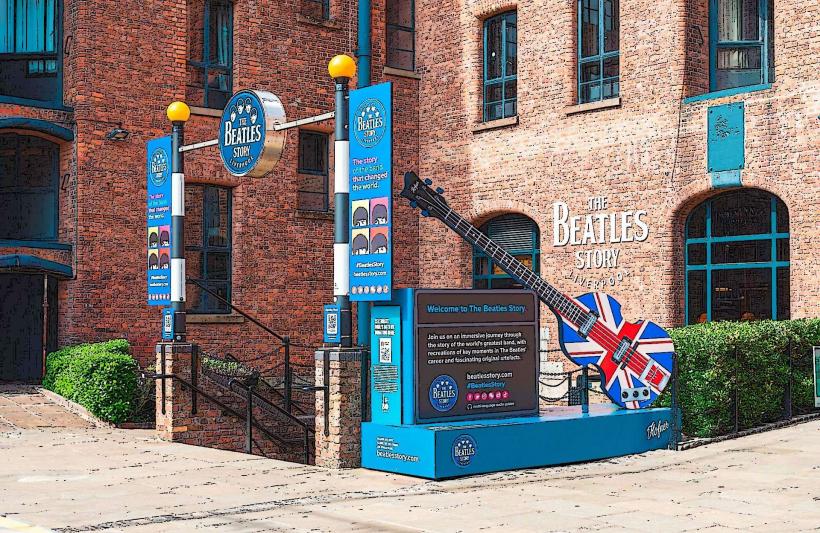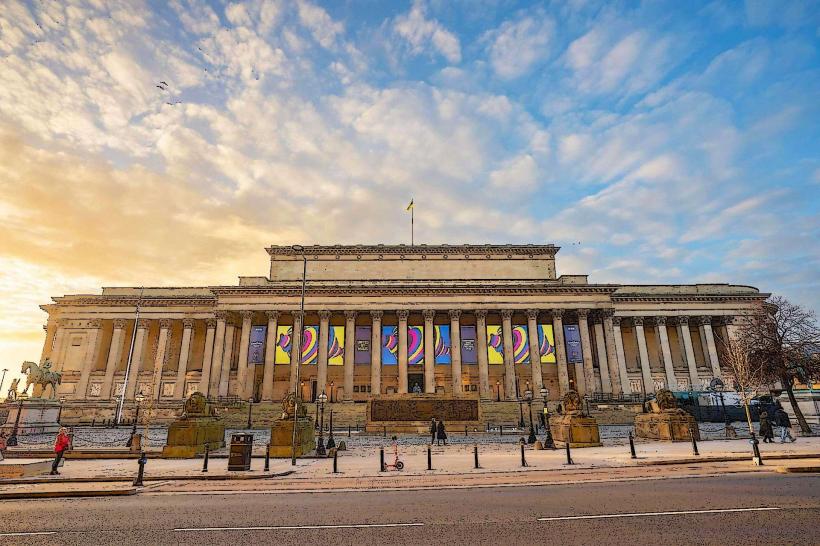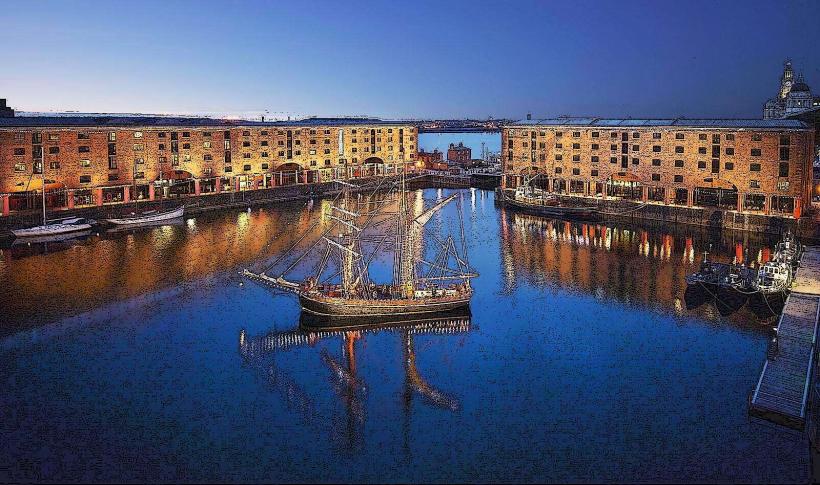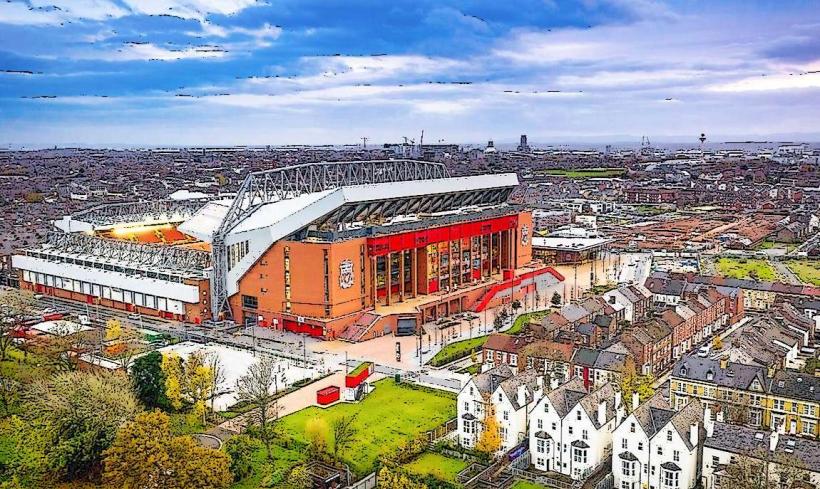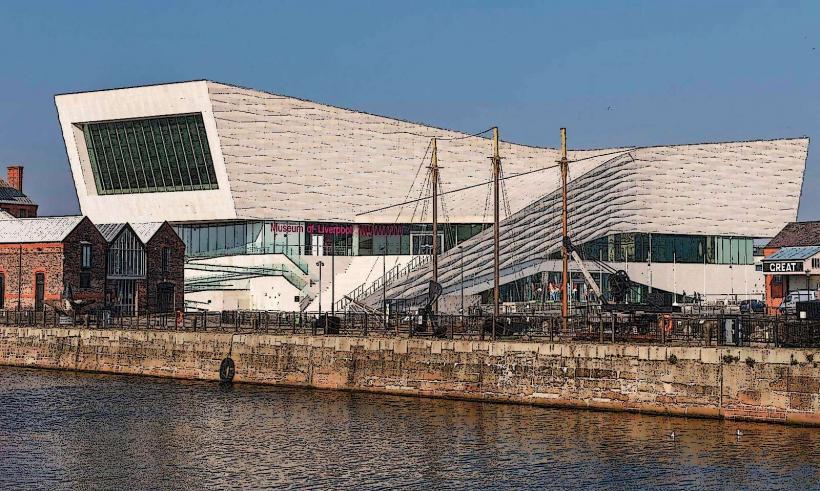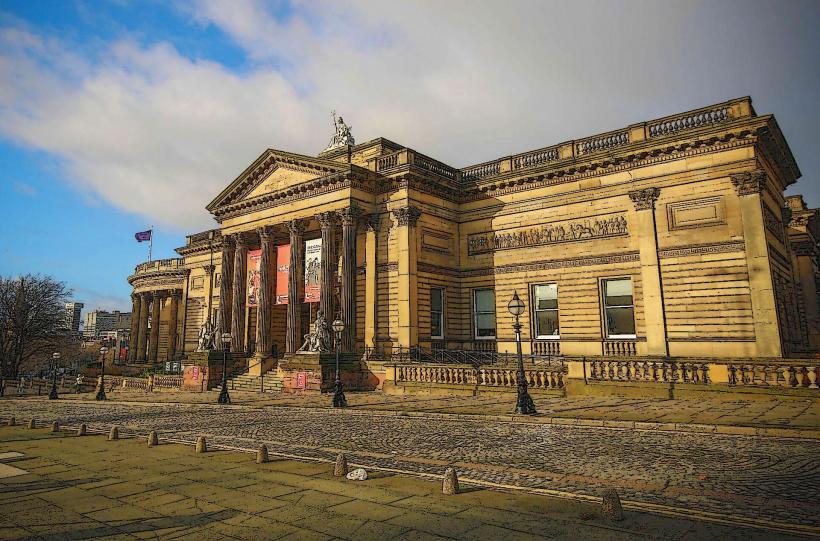Information
Landmark: Tate LiverpoolCity: Liverpool
Country: United Kingdom
Continent: Europe
Tate Liverpool is one of the most prominent modern art galleries in the United Kingdom, located in the heart of Liverpool's vibrant Albert Dock area. It is part of the Tate network, which also includes Tate Britain, Tate Modern, and Tate St Ives. Opened in 1988, Tate Liverpool is the flagship gallery of contemporary and modern art in the northwest of England, showcasing some of the world’s leading artists and offering a diverse range of exhibitions and collections.
History and Origins
Founding: Tate Liverpool was established as part of the British government’s Arts Council initiative to promote modern art across the UK. It opened in 1988, housed in a historic warehouse that was once part of the Albert Dock, a key area in Liverpool’s maritime history. The building was designed by architect Sir James Stirling and his partner Michael Wilford, reflecting both the city’s industrial past and its future as a hub for contemporary culture.
Building and Architecture: The gallery occupies a striking space within the Albert Dock, a UNESCO World Heritage site. The building itself retains much of its original industrial architecture, including brick walls, exposed beams, and large windows that flood the interior with natural light. The gallery has undergone several renovations and expansions to accommodate its growing collection and exhibitions, while retaining its original character.
Part of the Tate Network: Tate Liverpool is part of the wider Tate network, which includes Tate Britain (London), Tate Modern (London), and Tate St Ives (Cornwall). As part of this prestigious network, the gallery benefits from significant resources, collaborations, and access to major exhibitions from artists around the world.
Collections and Exhibitions
Contemporary and Modern Art: Tate Liverpool’s collection focuses on modern and contemporary art, with works dating from the early 20th century to the present day. It has an extensive collection of works by British and international artists, including many significant pieces from the pop art, conceptual art, and abstract expressionist movements.
Key Artists Represented: The gallery’s collection includes works by some of the most celebrated artists of the 20th and 21st centuries, including:
- Pablo Picasso
- Mark Rothko
- Andy Warhol
- Joseph Beuys
- Henri Matisse
- Roy Lichtenstein
- David Hockney
- Damien Hirst
- Louise Bourgeois
Exhibition Program: Tate Liverpool is renowned for its dynamic exhibition program, which combines solo shows by leading artists, group exhibitions on specific themes, and major international art events. Past exhibitions have featured works by artists such as Tracey Emin, Grayson Perry, and JMW Turner, as well as thematic exhibitions exploring topics like identity, political art, social change, and the digital age.
The gallery also frequently hosts major exhibitions that travel from other Tate galleries, such as Tate Modern in London, ensuring that visitors in Liverpool can experience the same high-caliber art shows as those in the capital.
Thematic Exhibitions: Tate Liverpool often focuses on thematic exhibitions that explore broad ideas such as nature, technology, society, and identity. These exhibitions typically combine works by multiple artists and examine how art responds to, or engages with, various social and political issues.
Collaborations: As part of the Tate network, Tate Liverpool frequently collaborates with other international museums, galleries, and institutions, bringing together global perspectives and creating opportunities for cross-cultural dialogue. Collaborations allow the gallery to present significant exhibitions, often featuring works that are rarely seen outside of major art capitals.
Key Features and Highlights
Pop Art and British Art: Tate Liverpool has a strong focus on pop art, with notable works by Andy Warhol, Richard Hamilton, and Roy Lichtenstein. The gallery also has an impressive collection of British art, including works from the St. Ives School and the London School, reflecting Britain’s important role in shaping the course of modern art in the 20th century.
Sculpture and Installation Art: Tate Liverpool also includes significant collections of sculpture and installation art. The gallery’s open spaces allow for large-scale installations and immersive exhibitions, enabling visitors to engage with the artwork in a tactile and experiential way.
Video and Digital Art: The gallery has embraced new media in its exhibitions, with a growing collection of video art, digital installations, and works that engage with technology. This includes installations that combine virtual reality, video projections, and interactive technologies to push the boundaries of art-making in the digital age.
Local and International Artists: While the gallery is committed to showcasing internationally renowned artists, it also features works by local and emerging artists. Tate Liverpool plays an important role in supporting regional talent, offering opportunities for Liverpool-based artists to exhibit their work alongside the greats of the international art world.
The Tate Collection: Tate Liverpool is home to an impressive portion of the Tate collection, which spans several thousand works of art across different mediums. The collection includes painting, sculpture, photography, film, and printmaking, with an emphasis on work created after 1900.
Educational Programs and Outreach
Learning and Engagement: Tate Liverpool is dedicated to making art accessible to all, and its learning and engagement programs aim to connect visitors with the works on display. The gallery runs various educational programs, including guided tours, workshops, lectures, and family activities, all designed to make art more approachable and engaging for a wide range of audiences.
Tate Exchange: One of Tate Liverpool’s most innovative initiatives is the Tate Exchange program, which encourages visitors to become involved in the creative process. Tate Exchange is a space for collaboration, where visitors can participate in workshops, discussions, and activities led by artists, curators, and other creative professionals. The program is designed to engage visitors with art-making and foster a deeper understanding of contemporary art practices.
Youth Programs: Tate Liverpool runs a number of youth programs aimed at inspiring the next generation of artists and art lovers. These programs include opportunities for young people to engage with art through workshops, discussions, and artist-led sessions. The gallery is committed to fostering creativity in young audiences, ensuring that art remains relevant to all generations.
Community Engagement: The gallery also has a strong commitment to the local community. It works with local schools, community groups, and artists to develop programs that bring art into the lives of people who might not otherwise have access to it. Tate Liverpool regularly hosts community events, such as art fairs and local artist showcases, to highlight the creative potential of Liverpool's residents.
Visitor Experience
Café and Gift Shop: Tate Liverpool has a café that offers a selection of light refreshments, allowing visitors to relax while enjoying views of the Albert Dock. The café offers a variety of food and drink options, including locally sourced ingredients. The gift shop sells art-related products, books, prints, and unique souvenirs, making it a great place to pick up a memorable item from your visit.
Accessibility: The gallery is committed to ensuring that all visitors can enjoy its exhibitions. It offers a range of accessibility services, including wheelchair access, audio guides, and specialized tours for visitors with different needs. The gallery also provides sign language interpretation and accessible facilities to ensure a welcoming environment for everyone.
Free Admission: Tate Liverpool offers free admission to its permanent collection, making it an accessible and inclusive destination for anyone interested in modern and contemporary art. Temporary exhibitions may have an entrance fee, but the gallery’s policy of free access to its permanent collection ensures that everyone can experience art in a welcoming space.
Conclusion
Tate Liverpool is a vital cultural institution in Liverpool, offering a rich and diverse program of modern and contemporary art. With its stunning location in the Albert Dock, a world-class collection, and dynamic exhibitions, it is an essential stop for anyone interested in exploring the forefront of the global art scene. The gallery’s commitment to learning, community engagement, and inclusivity makes it a vital part of Liverpool’s thriving cultural landscape, drawing visitors from around the world to experience art in its many forms.

